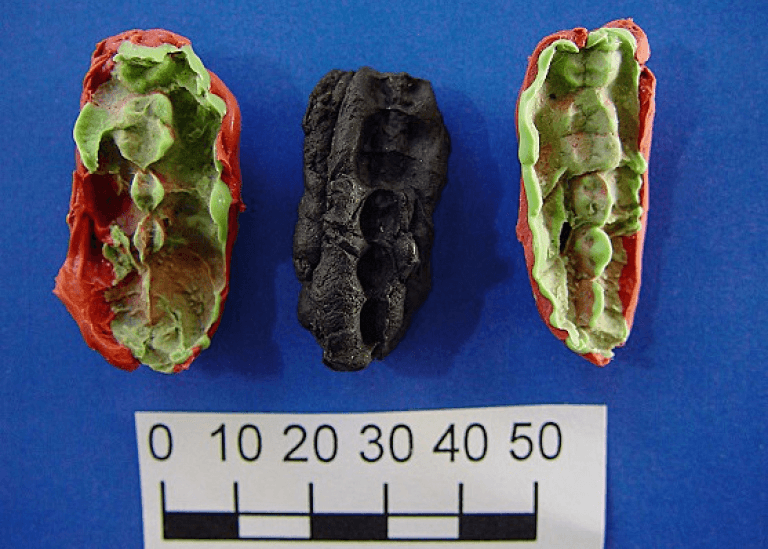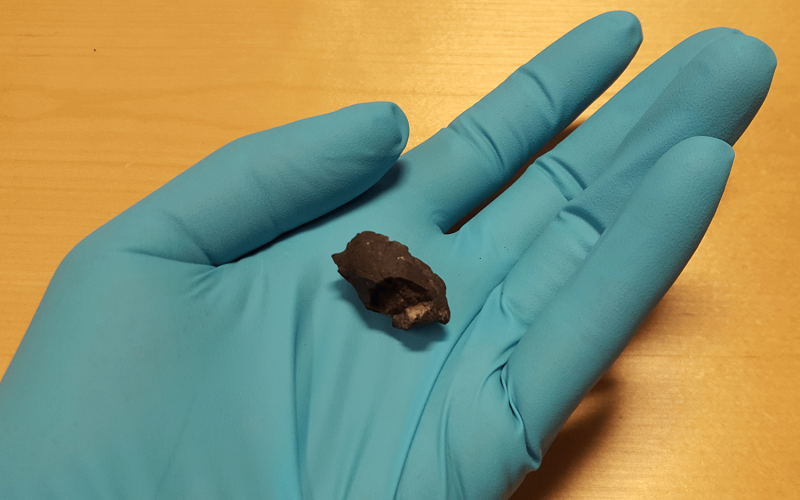We know this because an international research team has been working with the chewed resin from Huseby Klev for some time. “There is a richness of DNA sequences in the chewed mastic from Huseby-Klev, and in it we find both the bacteria that we know are related to periodontitis, and DNA from plants and animals that they had chewed before”, says Dr. Emrah Kırdök, from Mersin University Department of Biotechnology, who coordinated the metagenomic work on the Mesolithic chewing gum. Emrah Kırdök started to analyse the material when he was a postdoc at the Department of Archaeology and Classical Studies at Stockholm University, but the study has grown much since then.
The site Huseby Klev on the island Orust was excavated 30 years ago. Chewed resin was found together with remains of stone tools in a context dated to c. 9700 years ago. The stone material also indicated a Mesolithic chronology. The chewed material from Huseby Klev has already generated a study on the human genetic data from three individuals, and the DNA in the material that was not of human origin has also been analysed and published.

Snapshot of the life of a small group of hunter-gatherers
Professor Anders Götherström, at the Centre for Palaeogenetics, a collaboration between Stockholm University and the Swedish Museum of Natural History, is the head of the project where this study was conducted. “This provides a snapshot of the life of a small group of hunter-gatherers on the Scandinavian west coast. I think it is amazing, there are other well established methods to work out what nutrition and diet relates to the Stone Age, but here we know that these teenagers were eating deer, trout, and hazelnuts 9 700 years ago on the west coast of Scandinavia, while at least one of them had severe problems with his teeth.”































